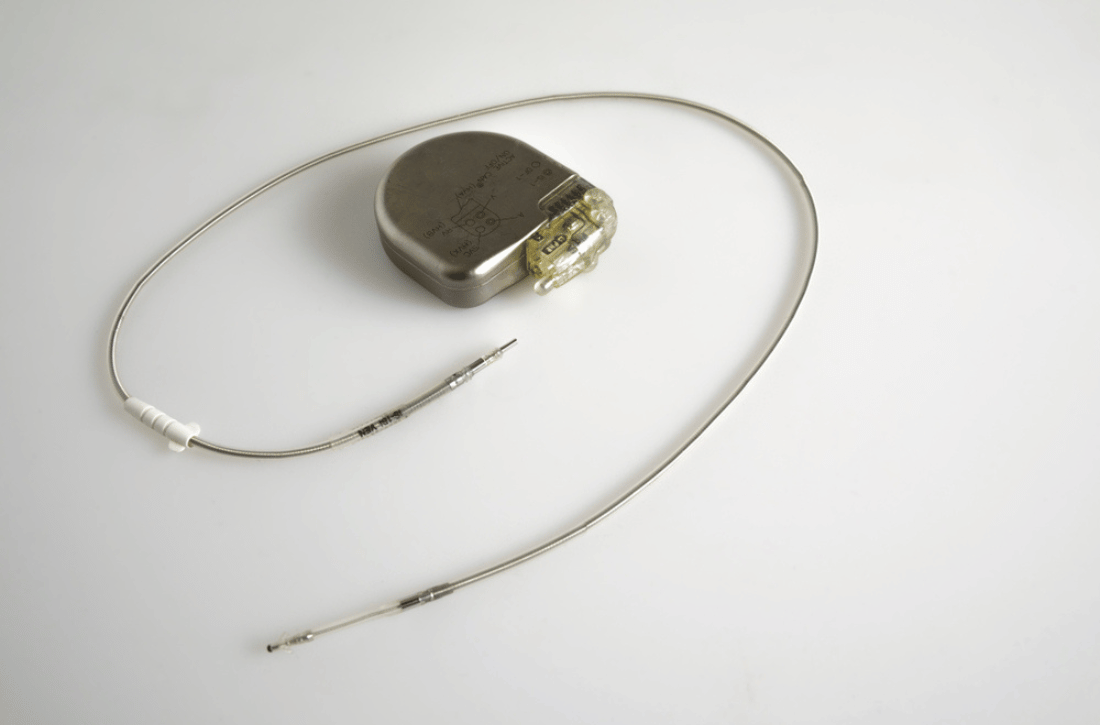ICD Implantation
Home - ICD Implantation

Implantable Cardioverter Defibrillator (ICD) implantation is a specialized procedure used to treat life-threatening arrhythmias and reduce the risk of sudden cardiac arrest (SCA) in patients at high risk due to underlying heart conditions. This advanced device continuously monitors heart rhythm and delivers electrical shocks when necessary to restore normal heart rhythm and prevent fatal arrhythmias.
Understanding Arrhythmias and Sudden Cardiac Arrest (SCA)
Arrhythmias are irregular heartbeats caused by disruptions in the heart’s electrical signalling. In some cases, arrhythmias can progress to more severe conditions such as ventricular fibrillation (VF) or ventricular tachycardia (VT), which can lead to sudden cardiac arrest (SCA) – a sudden loss of heart function, breathing, and consciousness.
Risk Factors for Arrhythmias and SCA
- Coronary Artery Disease (CAD): Narrowing or blockage of coronary arteries that supply blood to the heart.
- Heart Failure: Weakened heart muscle unable to pump blood effectively.
- Cardiomyopathy: Disease of the heart muscle affecting its structure and function.
- Previous Heart Attack: Scar tissue formation in the heart affects electrical conduction.
- Inherited Conditions: Such as Long QT syndrome or Brugada syndrome affecting heart rhythm.
Indications for ICD Implantation
ICD implantation may be recommended for patients who have:
- Survived Sudden Cardiac Arrest (SCA): Requiring protection against future life-threatening arrhythmias.
- Significant Arrhythmias: Including ventricular fibrillation (VF) or sustained ventricular tachycardia (VT) that pose a high risk of sudden cardiac death.
- High Risk of SCA: Due to underlying heart conditions and a history of arrhythmias despite medical therapy.
Components of an Implantable Cardioverter Defibrillator (ICD)
An ICD consists of several components:
- Pulse Generator: Contains the battery and electronic circuitry that continuously monitors heart rhythm and delivers electrical shocks when needed.
- Leads (Electrodes): Insulated wires that deliver electrical impulses from the pulse generator to the heart chambers (ventricles).
- Programming Device: Used by healthcare providers to adjust ICD settings, monitor heart activity, and analyze stored data during follow-up appointments.
Types of ICD Devices
Single-Chamber ICD
A single-chamber ICD has one lead placed in either the right ventricle or right atrium to monitor and treat arrhythmias in one chamber of the heart.
Dual-Chamber ICD
A dual-chamber ICD has two leads: one in the right atrium and one in the right ventricle, allowing it to monitor and treat arrhythmias involving both chambers of the heart.
Cardiac Resynchronization Therapy Defibrillator (CRT-D)
Used for patients with heart failure and electrical dyssynchrony, a CRT-D has three leads: one in the right atrium, one in the right ventricle, and one in the left ventricle. This device coordinates the timing of contractions between the ventricles to improve heart function and reduce symptoms.
ICD Implantation Procedure
Pre-Procedure Preparation
Before ICD implantation, you will undergo:
- Medical Evaluation: Including a physical exam, electrocardiogram (ECG), echocardiogram, and possibly a stress test to assess heart function and identify any underlying conditions.
- Discussion of Procedure: Your cardiologist will explain the purpose of ICD implantation, expected benefits, risks, and alternative treatment options.
Procedure Steps
- Anaesthesia: Local anaesthesia is administered to numb the area where the ICD will be implanted, usually near the left or right collarbone.
- Lead Placement: Your cardiologist makes a small incision to access a vein near the collarbone and guides the leads through the vein into the heart chambers (ventricles) using fluoroscopic imaging for guidance.
- Pulse Generator Placement: The pulse generator (ICD) is placed under the skin through a small incision near the collarbone and connected to the leads.
- Testing and Programming: Once the ICD is implanted, it is tested to ensure proper function and programmed to monitor heart rhythm and deliver electrical shocks if needed to restore normal heart rhythm.
- Closure: The incision site is closed with sutures or adhesive strips, and a sterile dressing is applied.
Recovery and Hospital Stay
- Immediate Post-Procedure: You will be monitored in a recovery area to ensure stability and may stay overnight for observation, depending on your overall health and the complexity of the procedure.
- Follow-Up Care: Your cardiologist will schedule follow-up appointments to monitor ICD function, adjust settings if needed, and address any questions or concerns you may have.
Living with an Implantable Cardioverter Defibrillator (ICD)
Living with an ICD involves:
- Activity Restrictions: Following guidelines to avoid activities that may interfere with ICD function, such as exposure to strong electromagnetic fields or certain medical procedures.
- Medication Adherence: Taking prescribed medications as directed to manage underlying heart conditions and support ICD function.
- Regular Follow-Up: Attending scheduled follow-up appointments with your cardiologist to monitor ICD performance, battery life, and overall heart health.
Conclusion
ICD implantation is a lifesaving procedure for patients at high risk of sudden cardiac arrest (SCA) due to arrhythmias or underlying heart conditions. Dr. Ankeet Dedhiya leads a specialized team of cardiologists and electrophysiologists dedicated to delivering personalized care. We employ advanced technology to enhance heart function and improve the quality of life for patients in need of ICD therapy. Whether you are managing arrhythmias, recovering from sudden cardiac arrest, or exploring treatment options, we are here to support you on your journey to optimal heart health.
FAQ
Frequently Asked Questions
An ICD is a specialized device implanted under the skin near the collarbone to monitor heart rhythm and deliver electrical shocks when life-threatening arrhythmias occur. It helps prevent sudden cardiac arrest (SCA) in patients at high risk due to underlying heart conditions.
An ICD may be recommended for patients who have survived sudden cardiac arrest (SCA), experience significant arrhythmias like ventricular fibrillation (VF) or sustained ventricular tachycardia (VT), or are at high risk of SCA due to conditions such as coronary artery disease (CAD), heart failure, or inherited heart conditions.
There are several types of ICD devices:
- Single-Chamber ICD: Monitors and treats arrhythmias in one heart chamber (ventricle or atrium).
- Dual-Chamber ICD: Monitors and treats arrhythmias in two heart chambers (atrium and ventricle).
- Cardiac Resynchronization Therapy Defibrillator (CRT-D): Combines ICD functions with cardiac resynchronization therapy to improve heart function in patients with heart failure and electrical dyssynchrony.
The procedure involves placing leads (wires) into the heart chambers through a vein near the collarbone, connecting them to the pulse generator (ICD) placed under the skin. The device is programmed to monitor heart rhythm continuously and deliver electrical shocks when necessary.
Recovery includes monitoring in a specialized unit to ensure the device functions properly. You may need to avoid certain activities that could interfere with the ICD's operation. Regular follow-up appointments with your cardiologist are essential to monitor device performance and overall heart health.
Following ICD implantation, it's important to follow guidelines provided by your cardiologist to avoid activities that may interfere with device function, such as exposure to strong electromagnetic fields. Adherence to prescribed medications and attending scheduled follow-up appointments are also crucial.
While generally safe, risks include infection, bleeding, lead dislodgement, and pneumothorax (lung collapse). Your healthcare team will discuss these risks and take precautions during the procedure to minimize them.
ICD devices typically last several years before needing replacement due to battery depletion. Your cardiologist will monitor device function during follow-up appointments and determine when replacement is necessary.
ICD implantation is performed at specialized hospitals with cardiac electrophysiology capabilities. Your cardiologist will refer you to a center equipped to perform ICD implantation and provide comprehensive care throughout your treatment journey.
Yes, an ICD is designed to detect and treat life-threatening arrhythmias promptly, including those that can lead to sudden cardiac arrest. It continuously monitors heart rhythm and delivers electrical shocks to restore normal heart rhythm and prevent fatal arrhythmias.
Regular follow-up appointments are scheduled with your cardiologist to monitor device function, adjust settings if needed, and ensure optimal performance. These appointments also involve evaluating battery life and assessing overall heart health.
